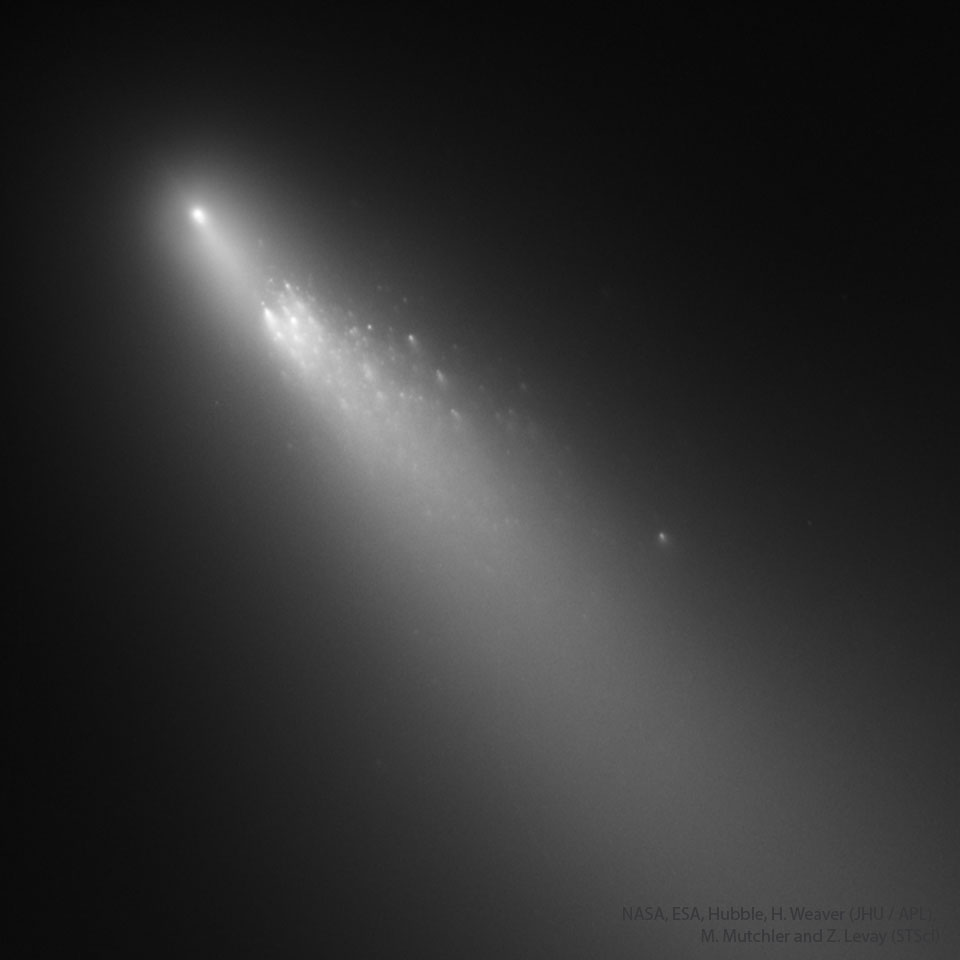2023年9月3日
Comet Schwassmann-Wachmann 3 Fragments
Credit: NASA, ESA, H. Weaver (JHU / APL), M. Mutchler and Z. Levay (STScI)
Explanation: Periodic comet 73P/Schwassmann-Wachmann 3 has broken up at least twice. A cosmic souffle of ice and dust left over from the early solar system, this comet was first seen to split into several large pieces during the close-in part of its orbit in 1995. However, in the 2006 passage, it disintegrated into dozens of fragments that stretched several degrees across the sky. Since comets are relatively fragile, stresses from heat, gravity and outgassing, for example, could be responsible for their tendency to break up in such a spectacular fashion when they near the hot Sun. The Hubble Space Telescope recorded, in 2006, the featured sharp view of prolific Fragment B, itself trailing a multitude of smaller pieces, each with its own cometary coma and tail. The picture spans over 3,000 kilometers at the comet’s distance of 32 million kilometers from planet Earth.
Tomorrow’s picture: star bursts
史瓦3号彗星碎裂
影像提供: NASA, ESA, H. Weaver (JHU / APL), M. Mutchler and Z. Levay (STScI)
说明: 周期彗星73P/史瓦3号彗星至少曾发生2次崩解。这团由冰与尘埃所聚成的宇宙级舒芙蕾,是早期太阳系的孑遗,它在1995年回归运行到最邻近太阳的区段时,裂解成数块大碎片。而在2006年的回归时,这颗彗星更进一步崩解成几十块、绵延数度天区的碎片。因为彗星相对脆弱,来到火热的太阳附近时,热、重力、及排气都有可能让它们发生这种大规模的崩解。哈伯太空望远镜在2006年,为”多产”的碎片B记录了这幅清晰影像。碎片B后头则有数十块小碎片跟随,而每一块都有自已的彗发及彗尾。这幅影像的跨幅超过3,000公里,拍照的当时,这颗彗星离地球有3千2百万公里远。 (73P/Schwassmann-Wachmann 3 73P/史瓦3号彗星)
明日的图片: star bursts







